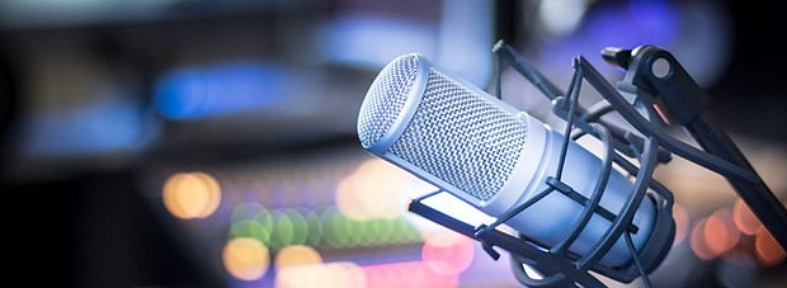Musical duo formed by Jorge Lima Barreto and Vítor Rua, formed in 1982 at the III Bienal de Vila Nova de Cerveira. In the same year he released the album “Ctu Telectu”, in an unorthodox formation of piano, electronic organ, harpsichord, synthesizer, bass and lead electric guitars, Portuguese guitar, drums and vocals.
Polyartist António Palolo became a third member of Telectu. From an early age, the duo’s musical practice was guided by a program of experimentation with different interpretative and compositional solutions, together with a rare technological update; This experimental character led him to essentially interpret his compositions, with the exception of conceptual pieces such as “Vexations” by E. Satie and “Compositions 1960” and “X for Henry Flint” by La Monte Young, 1982. Telectu created graphic scores, tablatures, instrumental tattoos, and considered the record and video as fixation and support for his works.
Laboratory for experimental pop syncrises and electroacoustic improvisation, throughout the 1980s its production was marked, first by the introduction in Portugal of repetitive minimal music, concoction of electronic live, magnetic band, electronic guitar displayed with mastery by Rua, vibraphone, piano electric, rhythm computer, and a parade of guitar models, prototype keyboards, a catwalk of digital devices, heteroclite, glabrous and electronic percussions; instrumental exoticisms, acoustic treatments in real time until around 1986, with relevant record editions on vinyl episodically reissued on CD.
Afterwards, he opted to search for new musical typologies called “jazz-off”, “mimetic music”, “rock-pop-off”, “new improvised music”, theorized in books or articles by J.L.B., or in pedagogical proposals, manifestos that accompanied shows or record and/or video editions.
Recognized as a cult group, Telectu introduced instrumental innovations and cutting-edge devices such as the e-bow, the sampler, the stick chapman, digital wind, string and percussion controllers, the DAT, the workstation, the wave station, the EWI, the digital sound system, processors, sequencers; an extravagant electronic paraphernalia, ethnographic instrumentarium, such as the Indian sitar and tampura, the African kalimba, pipa, sheng and Chinese gongs, prototypes such as the lithophone, Asian and South American flutes and idiophones, the Australian didgeridoo, sound sculptures or invented chordophones by Street, trinkets, toys, gadgets, sound objects.
The 1990s pointed to the development of structured improvisation, in idiolectal phrasing, polyrhythms, aggregates, clusters, concrete sounds of nature, domestic, industrial or urban, sinusoidals, noises, vocal syntagms, mimesis that recreates images and codes outside the established standards, “groove” style as a digital imitation of the acoustic instrument, stylistic and typological hybridizations, e.a. technological techniques and resources; requested collaboration from Portuguese artists since the 1980s (e.g. Jean Saheb Sarbib, Luís Carlos, Carlos Zíngaro, Nuno Rebelo, Sei Miguel, Filipe Mendes, António Duarte, Rafael Toral, Miguel Azguime).
Telectu began to frequently invite foreign musicians of absolute leadership in the similar aesthetic movement, whose partnerships resulted in the sporadic edition of phonograms as records of these sessions.
At the end of the 20th century and beginning of the 3rd millennium, Lima Barreto incidentally adopted the piano (keys, strings, percussion, prepared) and Rua computerized his speech with the computer, the eventide; declining a post-modernist plot of accentuated jazz verve, overlapping forms, citation games, performative radicalism, video spectacle and lighting technology, new production procedures, notions of spatialization included in notable anthologies such as “State of The Union”, New York, 2001; “Bed of Sound”, Contemporary Art Center, New York, 2001; “Exploring Music From Portugal”, London, 2001; “Antologia da Música Eletrônica Portuguesa”, 2003.
In the two decades of existence, they have accumulated countless records on audio and video tape, DAT, CDROM, CDI, magnetic stripe, computer, a collection designed for future and eventual editions. Throughout his career and in a diverse practice, he has performed at festivals, galleries and museums; theaters, concert halls and auditoriums where he developed a practice of improvisation combined with other performative and polyartistic postures and original scenography; achievements with actors, painters, videographers, etc.; In these performance events, especially in the 1980s, he often resorted to surprise and irony as strategies of resistance and creation of surprising situations.
Telectu, since its inception, has been involved in interartistic and multimedia projects, with prominent national artists. High-quality multimedia musical installations. Telectu is the Portuguese musical eponym linked to performance, developing sonic, corporal, scenic and psychodramatic situations; interaction of live electronic music with poetry spoken by and by Eugénio de Andrade (video, 1986), concrete poetry, phonetics, infoart; functional music for theater; film music; music for video art; included Rua and Palolo’s own videography in paradigmatic works such as “Autoloop”, 1986; “Compgraf”, 1988; the animated series “the yellow car”, 1985-1988; since 1984, the best part of Telectu’s shows have been videotaped; articulated the sound material, the phonogram as an aesthetic object, covers, iconography and posters, created by Palolo or the two musicians, using unusual materials and graphic techniques such as cork, silk, screen printing, multiform object).
Telectu is the epitome of an avant-garde, it is, in Portugal, the most significant example of post-modern music, a polyartistic adventure, “rhizomatic trajectory of open work”, “apology of intuition and the pleasure of the moment”.
Jorge Lima Barreto passed away in July 2011.












“Your voice is a masterpiece! Every note you sing carries so much depth and emotion—truly amazing!”
great musical duo, makes me want to listen to it over and over again
Echoes of dreams brought to life
I often read your articles because they are very detailed.
The emotional depth of this song is incredible. You can tell the artist puts everything into their music.
Este artigo sobre Telectu é uma excelente introdução a uma das duplas mais inovadoras e influentes da música experimental portuguesa. A forma como eles misturam sons e estilos é verdadeiramente fascinante, e a análise das suas obras ajuda a entender o impacto que tiveram na cena musical contemporânea. Estou ansioso para explorar mais sobre a trajetória e as colaborações deles. Obrigado por compartilhar informações tão ricas!